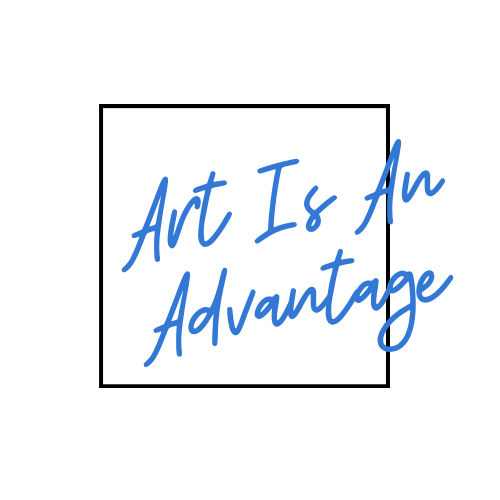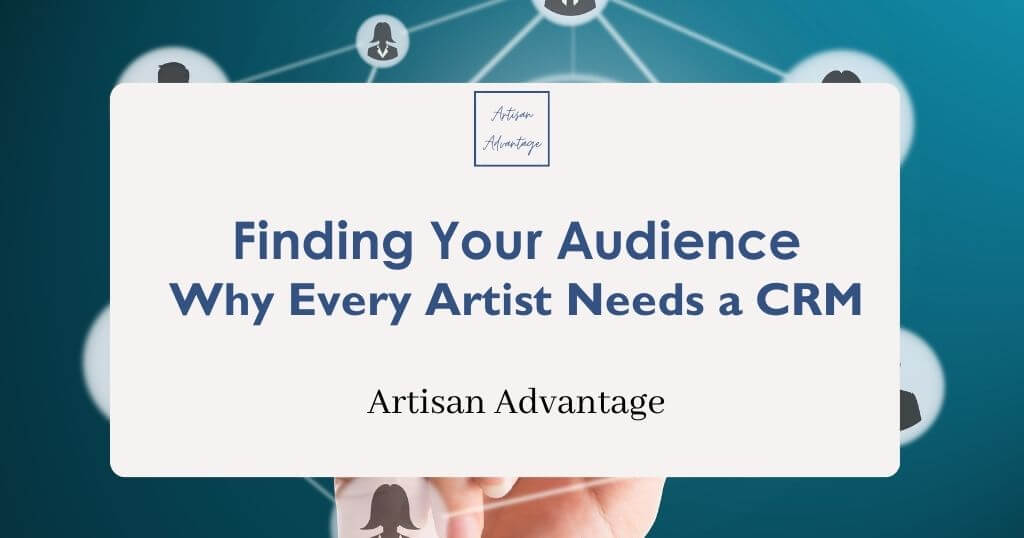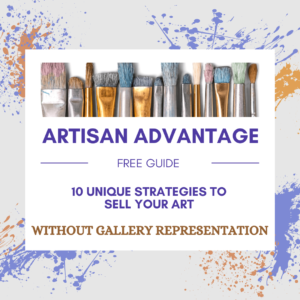Whether you’re a painter, sculptor, photographer, or any other visual artist, connecting with your audience is critical to success. This blog post series focuses on finding and cultivating an audience. So far, we’ve tipped the surface of this topic with an overview of a target audience and how to create a buyer persona. Before we go any further, I’d like to cover setting up a CRM system.
What is a CRM?
CRM stands for Customer Relationship Management, and it’s not just for sales teams or large corporations. At its core, a CRM is a tool designed to help businesses manage customer interactions and relationships. You can use a CRM system to organize contacts, track interactions with potential collectors, schedule follow-ups, and segment audiences based on preferences. This practice helps build and maintain relationships, understand collector needs, and strategically target marketing efforts for audience expansion and retention.
Set Your CRM Up Sooner Rather Than Later
Here’s why every artist should proactively have a CRM in place:
1 – Centralized Contact Management
As an artist, you’ll interact with many people – collectors, gallery owners, fellow artists, and fans. Keeping track of all these contacts can be overwhelming without a centralized system. A CRM allows you to store and organize contact information in one place, making it easy to manage your network.
2 – Track Audience Interactions
A CRM enables you to track interactions such as email inquiries, social media engagement, event attendance, and purchases. By monitoring these interactions, you will have a better idea of how people are finding you and responding to your work.
3 – Personal Engagements
One of the most significant benefits of using a CRM is the ability to personalize your interactions with your audience. By segmenting your contacts based on interests, location, or purchase history, you can tailor your communication to better resonate with each segment. Whether sending personalized emails, offering exclusive promotions, or inviting local supporters to your events, a CRM allows you to engage with your audience on a deeper level.
4 – Consistent Follow-Up
Building relationships takes time and effort. With a CRM, you can set reminders and automate follow-up tasks so you stay connected with your audience. Whether following up on a potential commission, sending a thank-you note to a collector, or reaching out to attendees after an exhibition, a CRM helps you maintain consistent communication and nurture relationships over time.
If you’re serious about finding and growing your audience as an artist, having a CRM in place is essential. A CRM can help you manage contacts, track audience interactions, personalize engagement, and stay organized. By proactively managing your relationships with your audience, you can build a loyal following that supports your art for years to come.
Are you Using a CRM?
Are you using a CRM that you love? I’d love to hear from you. I’ll focus on CRM options for artists in a future blog post.
Don’t miss another post. Sign up for my weekly information drop here, and I’ll let you know when the post is live.


